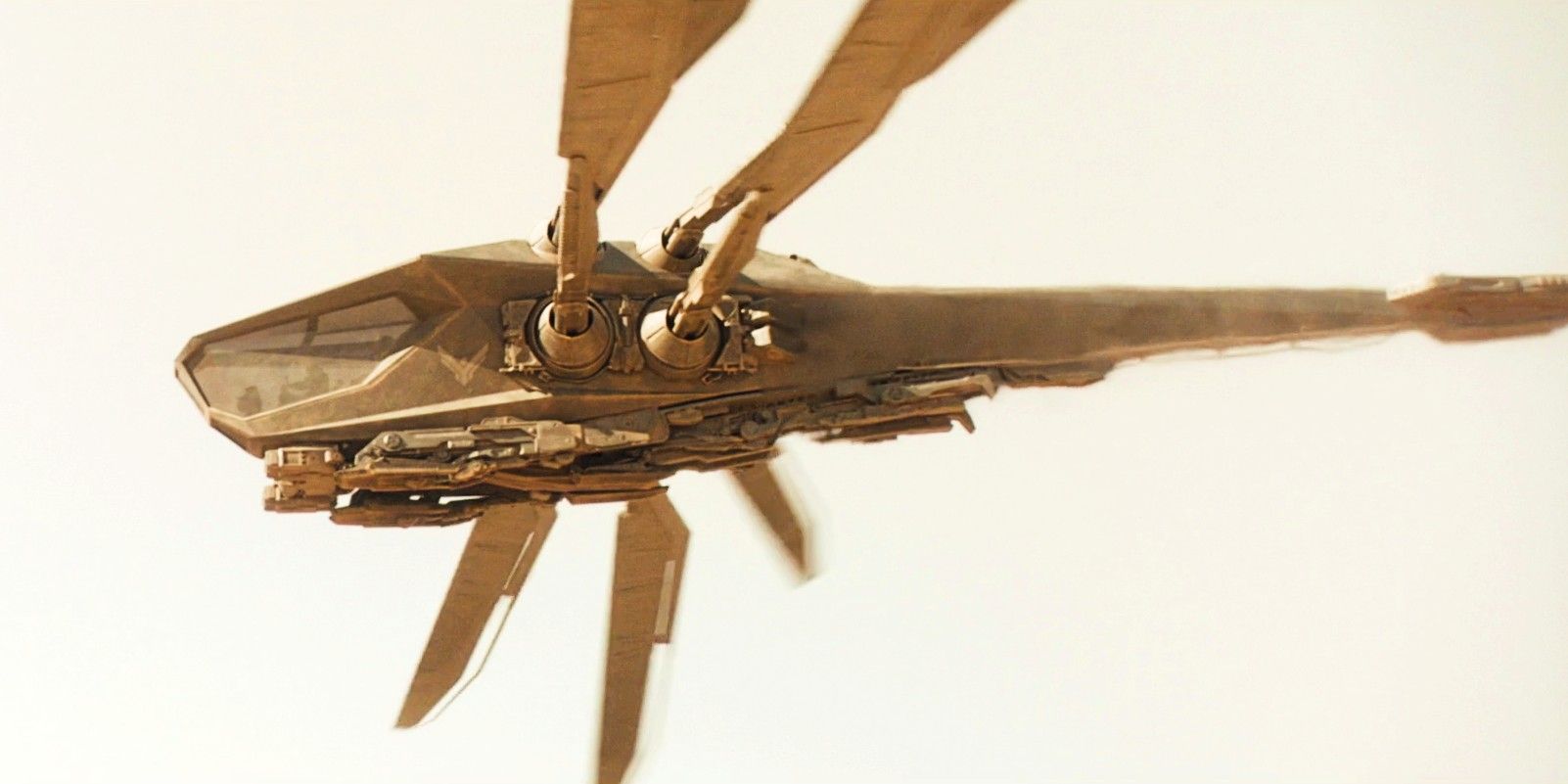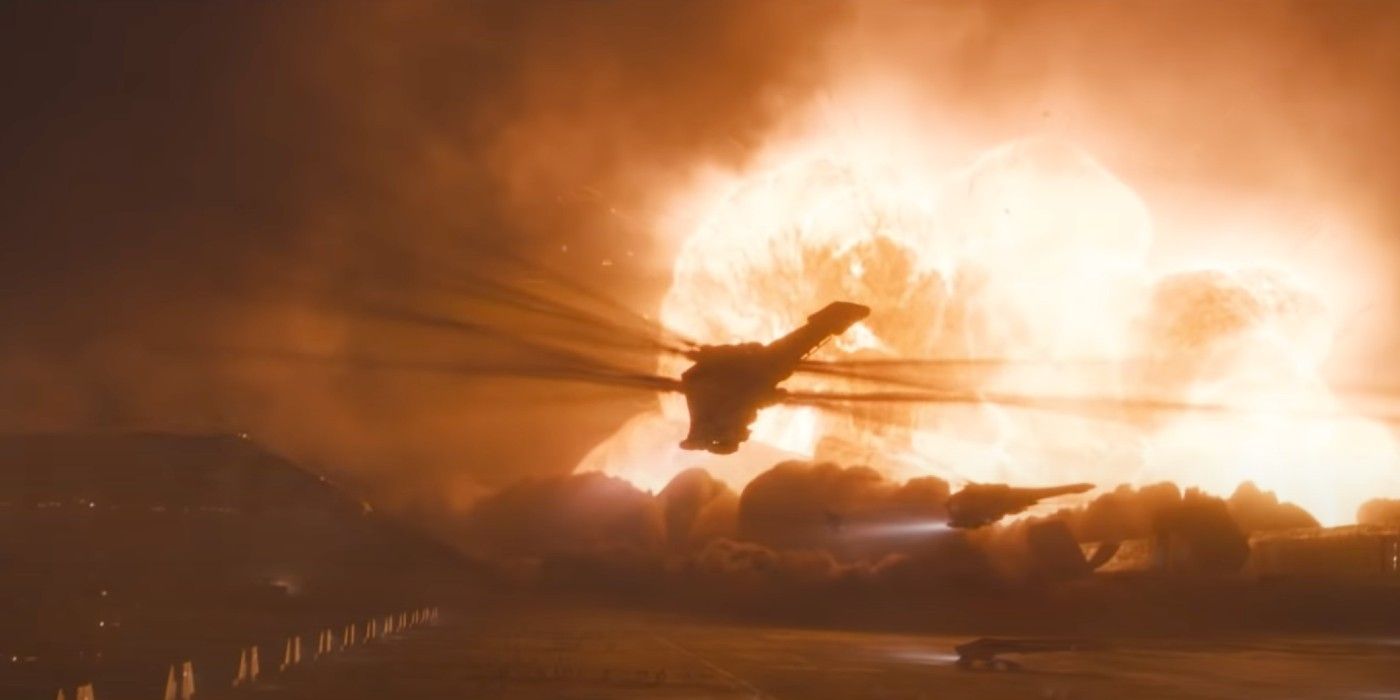How Dune Made Dragonfly Ornithopters Look Real
How Dune Made Dragonfly Ornithopters Look Real
In a new video, experienced visual effects artists break down the techniques that were used to achieve the lifelike Ornithopter effects in Dune.
You Are Reading :[thien_display_title]

A new video takes a look at the impressive ornithopters from Dune and explains why they look so real. The long-awaited Dune adaptation from director Denis Villeneuve was released last month to positive reviews and strong box office numbers. The film, which is adapted from Frank Herbert’s 1965 novel of the same name, stars Timothée Chalamet, Rebecca Ferguson, Oscar Isaac, Zendaya, Jason Momoa, Stellan Skarsgård, Javier Bardem, and Josh Brolin.
The movie tells the story of Paul Atreides (Chalamet), son of a noble family, who must travel to the most dangerous planet in the galaxy in order to secure a valuable resource that will ensure the safety of his family and his people. The film has been praised for its impressive, photo-real visual effects (including some high praise from filmmaker Christopher Nolan), and Legendary and Warner Bros. have already greenlit a sequel, which is due out in 2023. Filming for the sequel has now been confirmed to begin in July of 2022.
In a new episode of Corridor Crew’s popular YouTube series Visual Effects Artists React, the crew breaks down the effects from Dune and explains how the VFX artists achieved such a lifelike appearance for the film’s ornithopters. The reason why the dragonfly-like vehicles look so real, they say, is due to the motion blur effect added to the vehicle’s wings. Much like dragonflies, ornithopters achieve flight by rapidly beating their wings up and down. As Wren, one of the hosts, says, “We’re talking such a high frequency of motion that, in a single shutter, not only does [the wing] go down, it goes back up, and back down, and back up again.”

Another aspect of the motion blur that the hosts celebrate, and that they say is crucial to achieving photo-realism, is the way in which the wings sometimes catch the light. There are brief moments where the wings almost lose their motion blur and achieve a shimmering quality as the sun’s light hits them. The hosts also point out that the frequency of motion for the wings is so great that it likely was not achievable through traditional rendering techniques and was, in fact, an effect added during the compositing stage of visual effects, which essentially means it was added in at the end of the VFX process when multiple visual layers are composited together to form a finished series of images.
What the VFX analysis video makes very evident is that there are likely many more elements involved in crafting CGI-heavy shots than most audiences realize. The visual effects artists that worked on Dune clearly took inspiration from real dragonflies when crafting the film’s ornithopters, even going so far as to properly capture the way light interacts with the insect’s rapidly-beating wings. The end result is some of the best-looking CGI to ever appear in a film, with many of Dune’s effects shots looking genuinely photo-real. To get a taste of the film’s impressive visual effects, audiences can now watch Dune in theaters or catch it before it leaves HBO Max on November 22nd.
Link Source : https://screenrant.com/dune-ornithopter-dragonfly-aircraft-special-effects-explained/
Movies -Fra Fee Interview Hawkeye
Infinity War Theory Trailers Show How [SPOILER] Dies
Harry Potter Every Movie Ranked Smallest To Biggest Budget
KUWTK Kim Kardashian’s 2016 Paris Robbery Suspects Set To Stand Trial
KUWTK Fans Pick Best Sister Kim Kourtney Khloe Kylie Or Kendall
Javier Bardem Praises Halle Baileys LiveAction Little Mermaid Singing
Godfall Is Finally As Good As It Should Be With Fire & Darkness DLC
